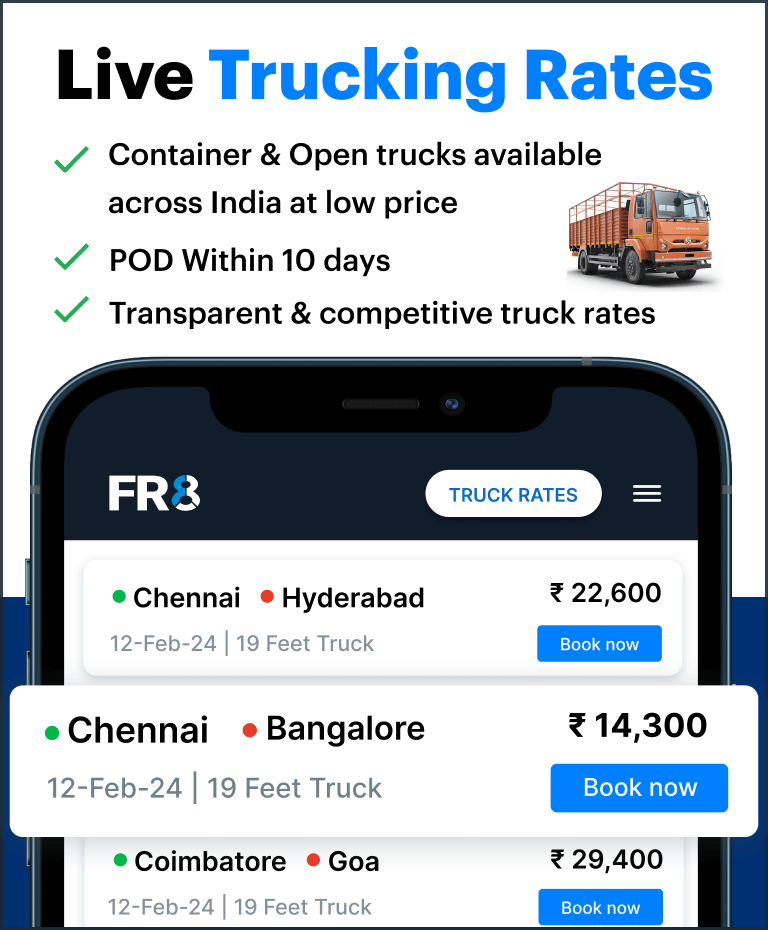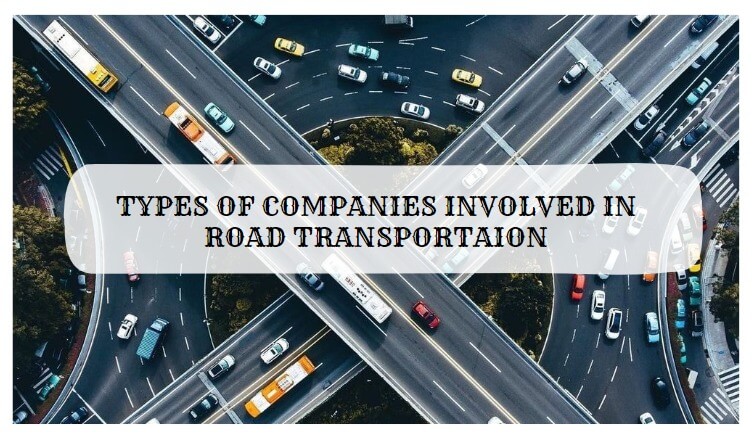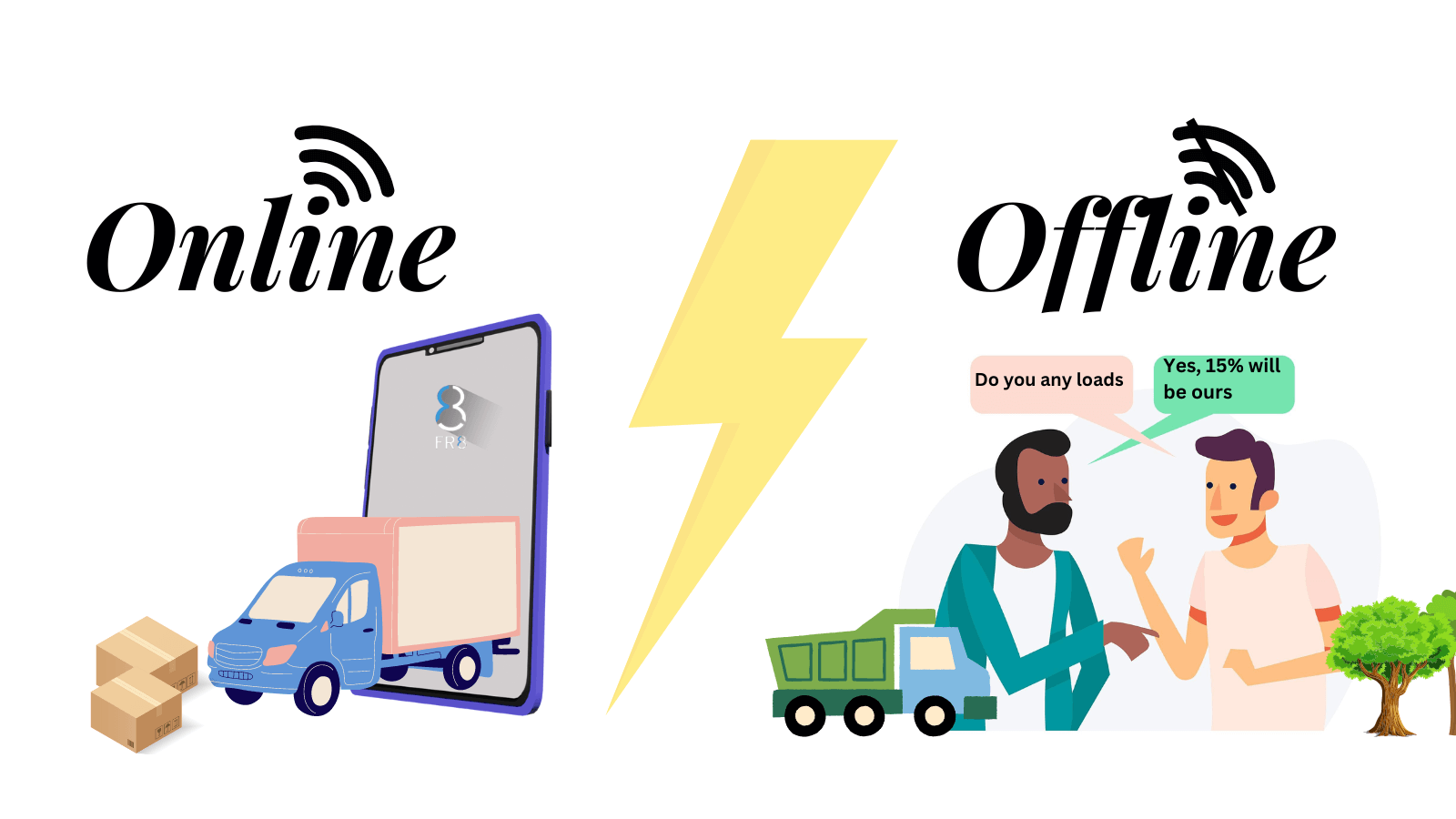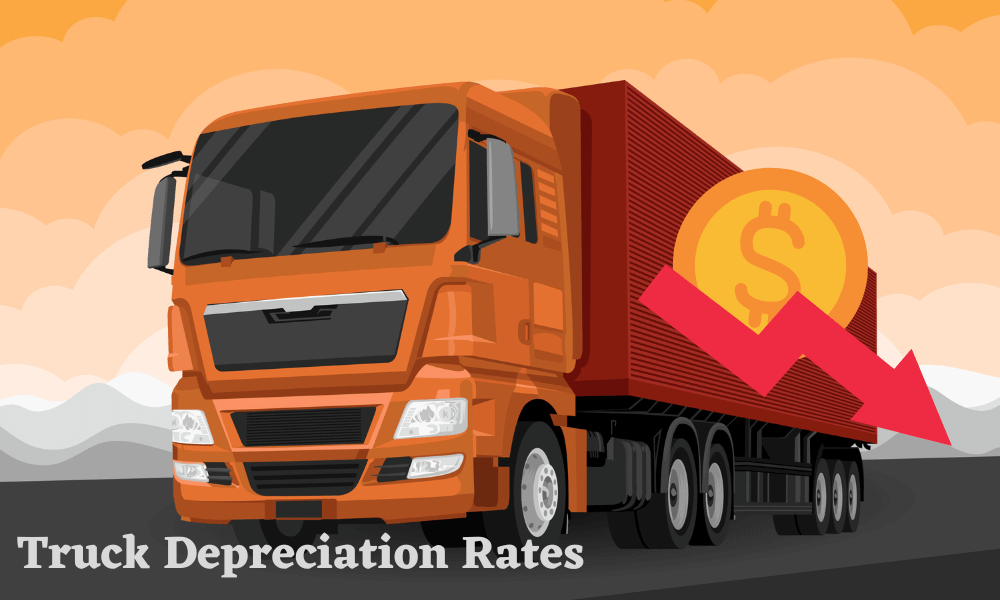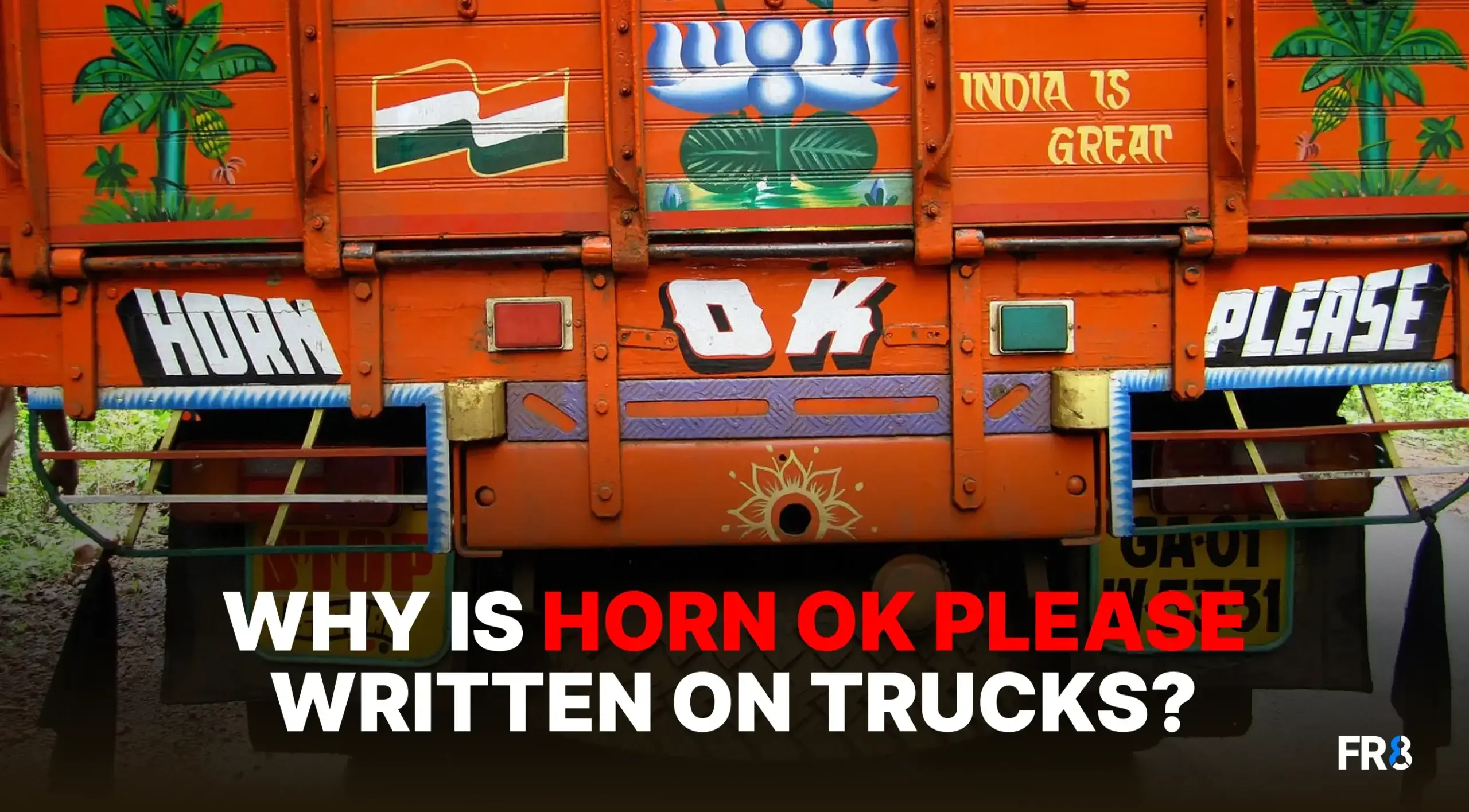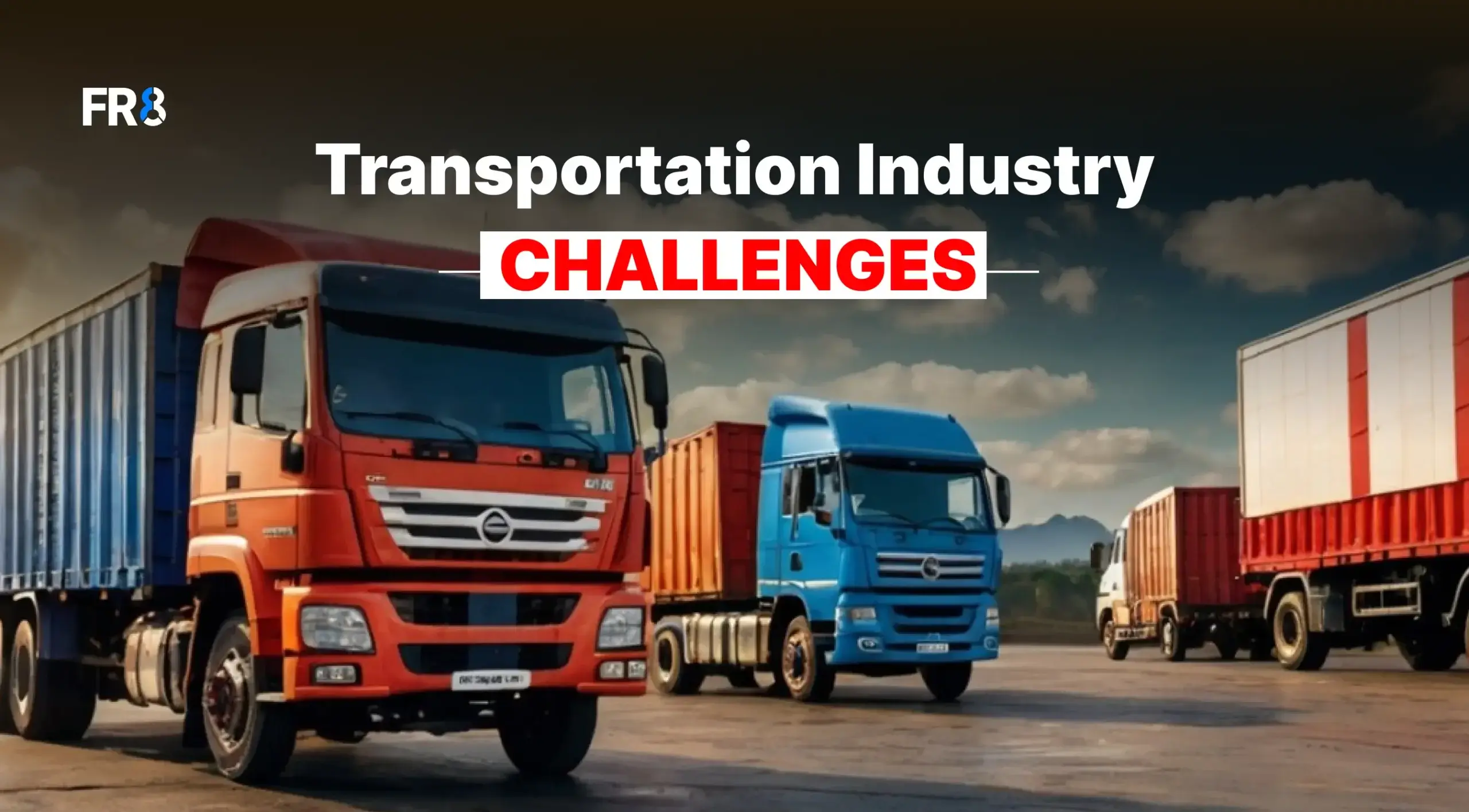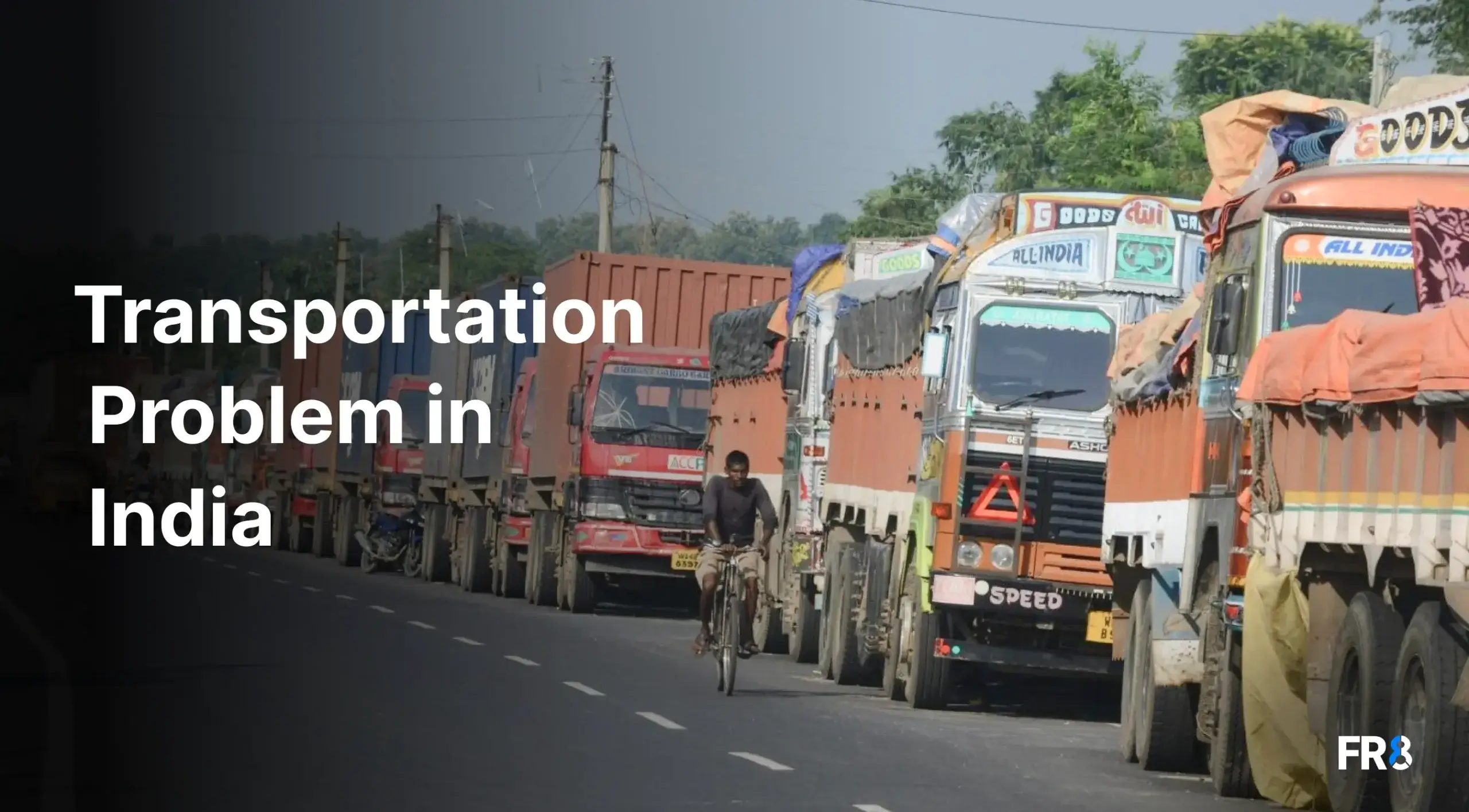
India’s transportation sector is very important for the country’s economic growth, playing a significant role in moving goods across the nation. Tucks carry about 60-65% of the freight traffic in India. However, there are various transportation problems that hinder its efficiency and effectiveness. This blog explores the current state of the trucking and logistics industry in India, the problems it faces, and the steps taken by the Indian government and transportation authorities to address these issues.
Table of Contents
Current Transportation Problem in India
The following are the current three major transportation problems in India:
1. Driver Shortage

India’s trucking industry is facing a major transportation problem that is driver shortage. Right now, for every 100 trucks, there are only about 55 drivers, compared to 75 drivers a few years ago. There are around 60 lakh trucks on the roads, but roughly 36 lakh drivers, meaning many trucks are sitting idle. “In the 1980s and 1990s, the ratio was much better, with about 1.3 drivers for every truck”, said Balasubramanian A, vice president, TeamLease Services. This shortage means 20 lakh trucks aren’t being used because there aren’t enough drivers. Many drivers are returning to their villages for events like weddings or voting, leaving more vehicles without drivers. This problem is especially bad for medium and heavy trucks, making it harder to transport goods across the country.
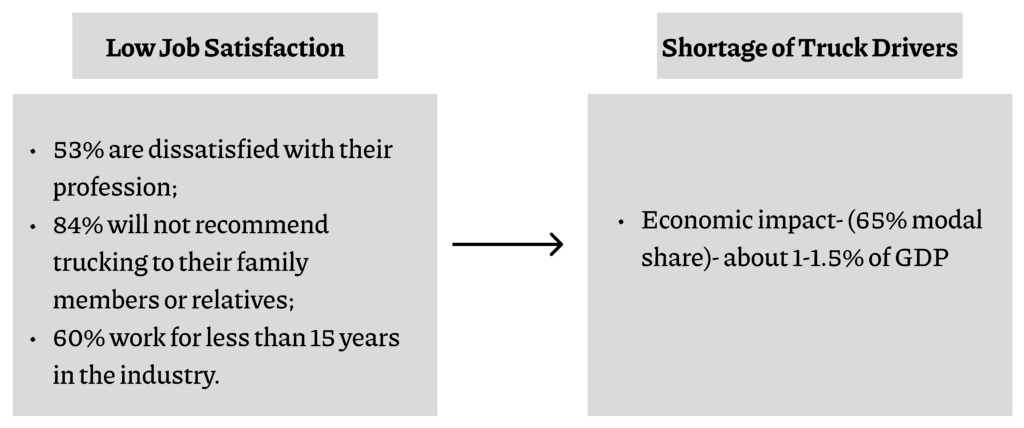
Reasons for Driver Shortage
Low Salaries
Truck drivers in India earn about Rs 20,000-25,000 per month, which is quite low compared to city cab drivers who make between Rs 20,000-30,000. Since cab driving is less physically demanding and offers similar or better pay, many prefer it over truck driving.
Health Issues
Over 50% of truck drivers develop health problems, such as back pain and cervical issues, by the age of 40-42. The recent extreme summer weather has made things worse, causing many drivers to fall sick or miss work.
Lack of Respect
“One of the major reasons keeping the new generation away from the profession is there is a lack of respect given to these people,” said Nitin Sharma, CEO at Road Pilot Technologies. Truck drivers often don’t get the respect they deserve, leading to dissatisfaction and fewer people wanting to join the profession. Many drivers spend long periods away from home, and the job’s social stigma means 38% of them are unmarried.
Possible solution
To address this transportation problem in India, we need to make their job better and more appealing. This includes improving their working conditions and paying them fairly for their hard work. Training programs and support for drivers’ well-being are important too, to attract more people to this essential job and keep our roads running smoothly.
The All India Transporters Welfare Association (AITWA) launched the Highway Heroes+ programme to support truck drivers by providing accident and medical insurance at a nominal cost, along with 24/7 help to prevent official harassment and roadside legal aid. As of Sep 2023, nearly 10,000 drivers have received the Highway Heroes+ cards, costing Rs 1,000 annually, with no premium for women drivers. The insurance offers up to Rs 5 lakh for accidents, Rs 1.5 lakh for hospitalization, and weekly disability benefits. Additionally, drivers get access to emergency services and interest-free loans up to Rs 25,000.
Additionally the Ministry of Road Transport and Highways has mandated that all new trucks manufactured on or after October 1, 2025, must be equipped with AC cabins to improve the driving experience of the truck drivers in India.
2. Lack of resting spots

Truck drivers in India face a tough situation with the lack of proper places to rest during their long journeys. A study found that more than 58% of drivers often feel tired or struggle to get enough sleep while on the road, which is a big safety issue.
These drivers typically spend about 20-25 days away from home every month and drive approximately 11.9 hrs drive/day. Unfortunately, there aren’t enough safe and comfortable resting spots for them along highways. This forces many drivers to stop in risky places, where they’re vulnerable to robberies.
Even at toll plazas, which have security cameras, drivers often encounter problems. Sometimes, police don’t allow them to rest there and ask for bribes instead of helping them stay safe.
One such robbery happened in Madhya Pradesh:
On June 26, 2024, truck drivers stopped for a rest at the Balaji Rajasthani Family Restaurant in Khargone, Madhya Pradesh. When they woke up, they discovered that many of their belongings, including their phones, had been stolen. There were several trucks parked at the location. The drivers claimed that the restaurant staff had mixed something into their food, causing them to fall asleep immediately. One driver even reported that he fell asleep right after eating just one roti. After some investigation, they managed to recover a few of their stolen items.
Possible Solutions
The Indian government is taking steps to address the lack of resting spots for truck drivers on highways. They plan to build 1,000 modern rest buildings across the country, with oil marketing companies and the National Highways Authority of India (NHAI) leading the effort.
Prime Minister Modi highlighted the importance of these facilities at the Bharat Mobility Global Expo saying “Drivers are a big part of the mobility sector, those who drive our trucks, taxis. They drive for long hours. They don’t have time for rest”. He recognized the challenges faced by drivers who spend long hours on the road and often suffer from fatigue and accidents. These new rest centres aim to make travel easier for drivers and improve safety.
Although drivers will have to pay a small fee for these services, the focus is on creating comfortable and secure places for them to rest, ultimately making India’s roads safer for everyone.
3. Highway Conditions
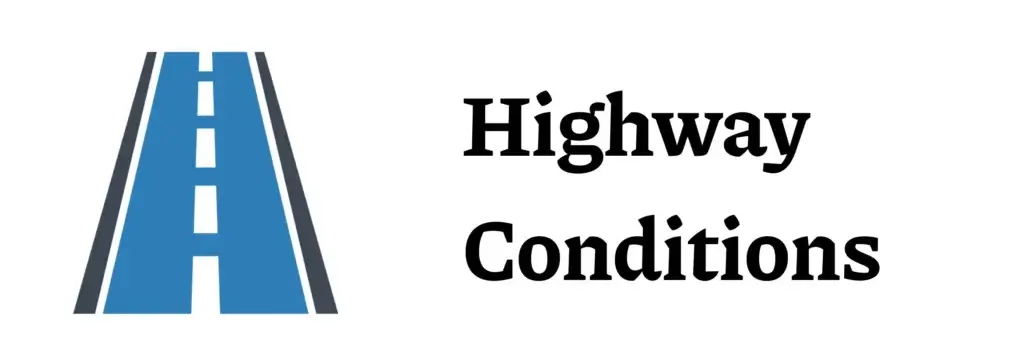
Indian highways are much more dangerous than regular roads and is one of the major transportation problem in India. Although national and state highways only make up 4.9% of the total road length, they accounted for 60.5% of all road accident deaths in 2022. Speeding is a major transportation problem, causing 72% of accidents and 71% of road deaths.
Trucks are the second most involved vehicles in accidents, with two-wheelers being their biggest victims. Rogue drivers who speed, run red lights, and drive on the wrong side of the road make conditions even more hazardous.
Drivers in India also deal with bumpy roads, jaywalkers, heavy traffic, and stray animals. Stray cattle and dogs are common, with about 5 million stray cattle and 15 million stray dogs reported in 2019. These animals pose serious risks to drivers, especially on highways.
One of the recent road accident is as follows:
Six people were killed and over 20 injured on 28th April when a speeding truck collided with a bus near Jamaldipur village on the Hardoi-Unnao road in Uttar Pradesh’s Safipur area. The bus driver ran away, but the police caught the truck driver. Injured passengers were treated at local hospitals, with some referred to Kanpur for serious injuries.
Possible Solution
To make Indian highways safer, we can take several important steps. First, the government should invest more in fixing and maintaining highways and other roads. Better roads mean fewer accidents caused by poor conditions.
Next, there should be stricter rules for truck drivers and companies. Drivers need proper training and licenses, and companies must keep their trucks in good shape and follow safety rules closely.
To deal with animals on highways, Prerana Arora Singh from People’s Trust, Jaipur, recommends the government to provide safe shelters for them, maintained by local administrations and community groups. This would help reduce accidents and improve road safety for everyone.
Lastly, enforcing traffic laws more strictly, including regular checks on trucks, is crucial for promoting safer driving habits. These actions together can make highways in India safer for everyone who uses them.
Conclusion
By focusing on improving road infrastructure, addressing driver shortages, and enhancing safety measures, India can overcome the current transportation problems and ensure a robust and dynamic trucking industry that supports its economic ambitions.

Yoga Laxmi
Sometimes English is just silly. That's what got me hooked on writing in the first place. Why on earth can't "grateful" be spelled "greatful"? Here's the thing, I love untangling the knots of language just as much as I love untangling the complexities of logistics. In my blog posts, I'll do both! No "greatful" mistakes here, just good info and a smooth journey through the world of shipping.


